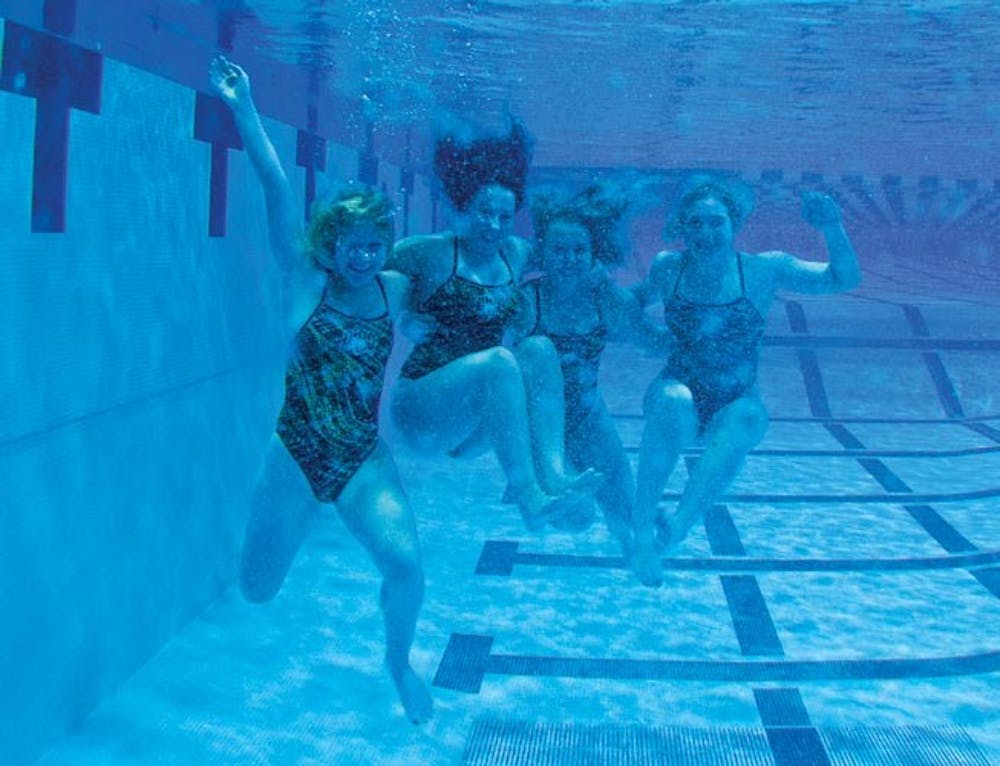Impressive, phenomenal, huge — those are only a few of the many positive adjectives Ohio swim coach Greg Werner uses to describe his diving team. Werner’s voice sounds excited whenever he talks about the diving program.
“I am very, very proud of them,” he said.
The reason for his excitement is obvious, as diving coach Russ Dekker has created the most successful diving program in school history since he started working at the Aquatic Center in 2004. He led the program from having no divers in the Mid-American Conference Championship final in 2006 to having four individual qualifiers for the NCAA Tournament last year — equal to the total the swimming and diving program had between 2006 and 2010.
“The reason we are successful is definitely Russ,” sophomore Haleigh Bartlett said.
Bartlett, junior Kristin Capcik, redshirt junior MaryRose Hillstrom and sophomore Morgan Srail represented Ohio at the national championships this past spring.
But the best is yet to come for Ohio. All of its NCAA qualifiers returned this year, and while the season is still young, the divers have already showed their potential by outscoring every opponent in the one- and three-meter diving competition in an impressive manner.
First they shut down Eastern Michigan, which Werner sees as the best diving team in the MAC, by eight points. They also outscored diving powerhouse Ohio State by seven points two weeks later and dominated the Patriot Invitational during the weekend, outscoring each of the opposing nine teams 175 to 61.
“I don’t know where we would be without our diving team,” Werner said.
If it weren’t for the divers’ performance, Ohio would have fallen behind second-place finisher Richmond in the invitational.
“We have a lot of depth,” Srail said.
Three different divers have already won events for Ohio this year.
Still, outside of the Aquatic Center, many people don’t realize the divers’ success. Diving itself appears to just be an attachment to the swimming meet and not the attraction itself.
The reason for that may be attributed to the complexity of diving competitions. For the most part, spectators are not able to determine what kind of dive the competitor performs even though it is always called out beforehand.
“They use numbers and letters to call the dive,” Capcik said. “The number describes the dive, and the letter tells the position of the dive.”
Each diver has to complete six different dives during an event, and the dives are rated on a 0–10 scale. The score is based on how high the dive is, how well it is performed and how small the splash is when the diver hits the water.
“You rather want to hit the water vertically than horizontally,” Bartlett said.
In efforts of attempting to achieve a dive of perfection, Dekker sends the divers to the pool 11 times a week with only Sundays off, meaning the divers are putting in as much effort as the swimmers.
Even though the divers and swimmers practice at different times, they don’t see themselves as two separate teams.
“Our sports are different, but we go to the same meets and hang out together a lot,” Capcik said. “The swimmers support us in a great manner. They are the only team we know having a cheer for divers.”
Still, when it comes down to goals for the upcoming season, the swimmers’ and divers’ goals differ drastically.
“We want to qualify all divers for the NCAA Tournament this year,” Srail said.
If that were to happen, Werner would have to come up with a new set of adjectives to describe his successful diving program.
am794811@ohiou.edu






